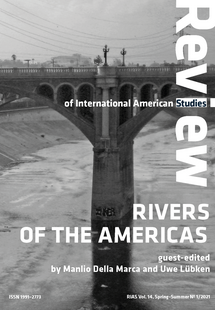The Uruguay River: A Permeable Border in South America
The Uruguay River: A Permeable Border in South America
Author(s): Eunice Nodari, Marcos GerhardtSubject(s): Physical Geopgraphy, Human Geography, Regional Geography, Environmental Geography
Published by: Wydawnictwo Uniwersytetu Śląskiego
Keywords: biodiversity; forests; Uruguay River; parks; landscapes;
Summary/Abstract: The Uruguay River basin in South America has held a social, cultural, environmental, and economic relevance for many centuries. The river flows for about two-thousand kilometers, linked to an important remnant of native forest, the Selva Misionera in Argentina, and to a Brazilian conservation unit for biodiversity, the Turvo State Park. The Uruguay River is fed by several other important rivers, forming a basin region in which thousands of people live and work. The history of the Uruguay River is intensively linked to the permeable borders between Brazil, Argentina, and Uruguay where different social groups circulated in diverse historical time periods. Forests along the river played a very important role with emphasis on the extraction and trade of yerba mate (Ilex paraguariensis, Saint-Hilaire), a forest product widely consumed in southern America, and also the timber extraction from native forests, during the nineteenth and twentieth centuries. As a result, a profound socio-environmental transformation took place with the reconstruction of regional landscapes shaped by the Uruguay River basin.
Journal: Review of International American Studies
- Issue Year: 14/2021
- Issue No: 1
- Page Range: 201-228
- Page Count: 28
- Language: English

